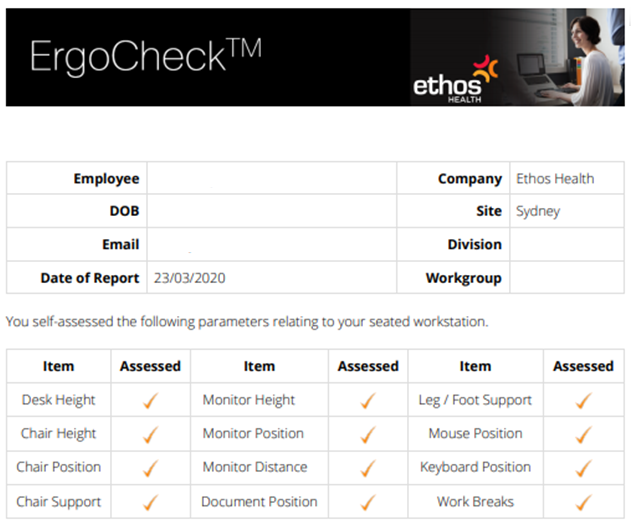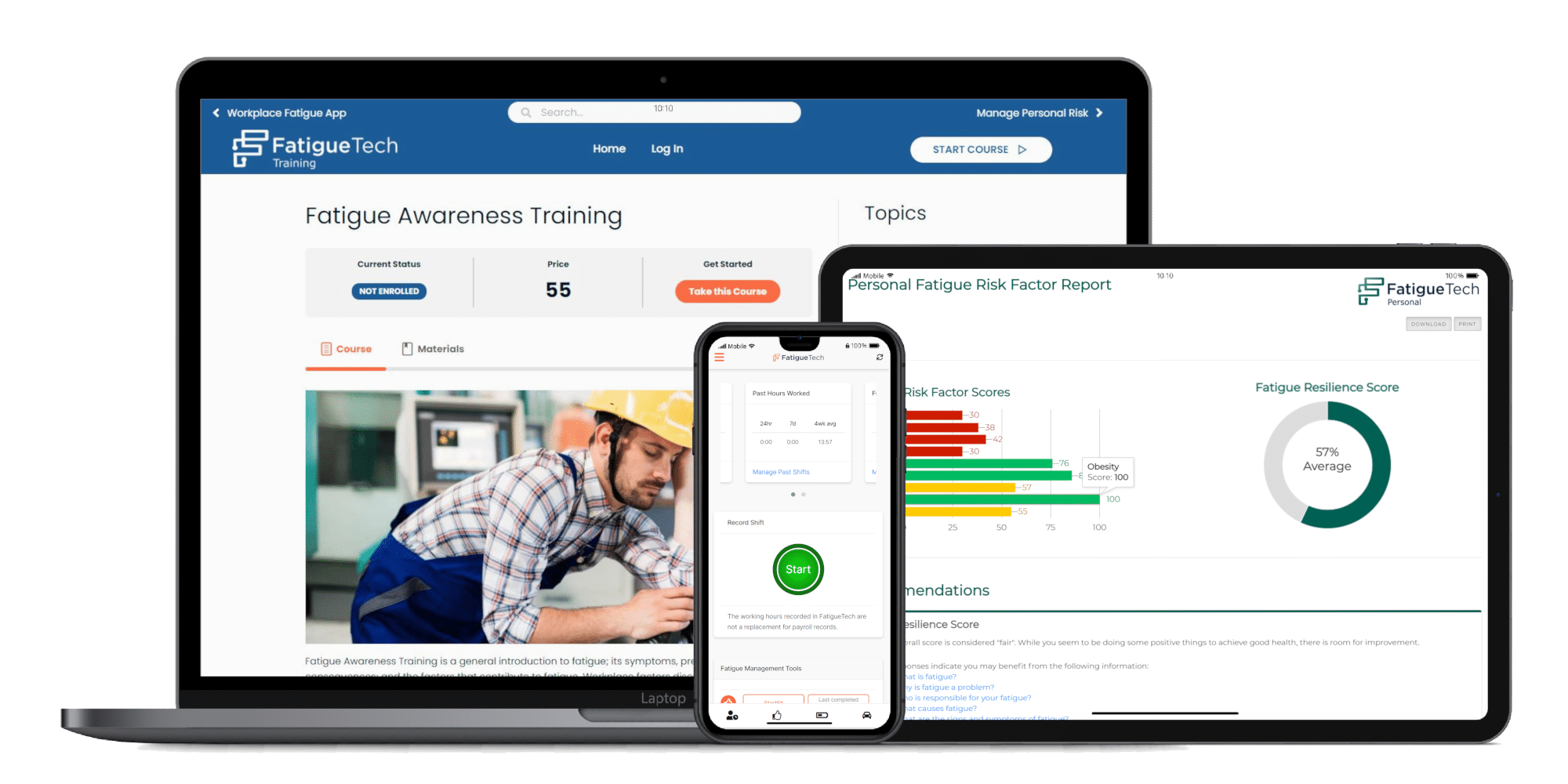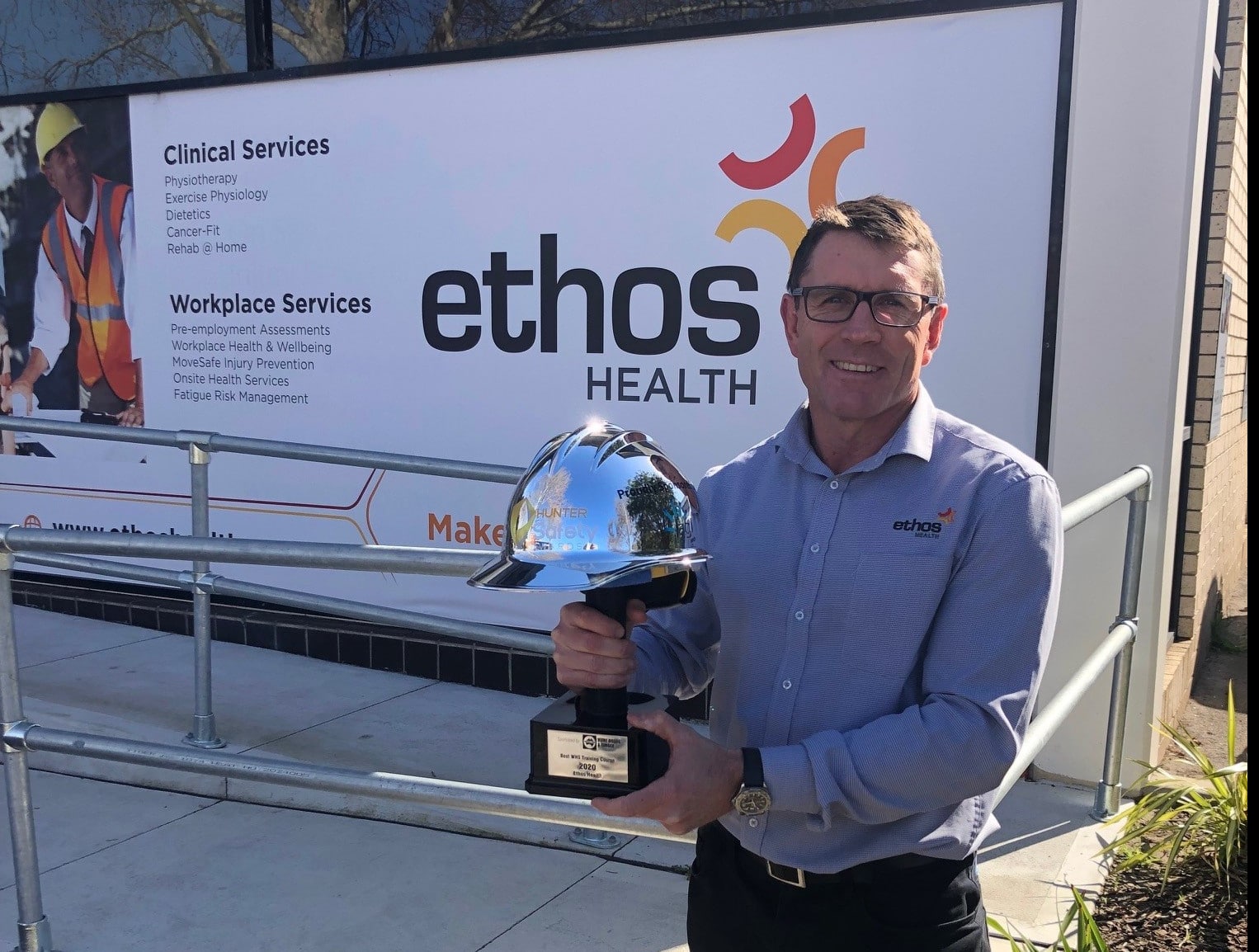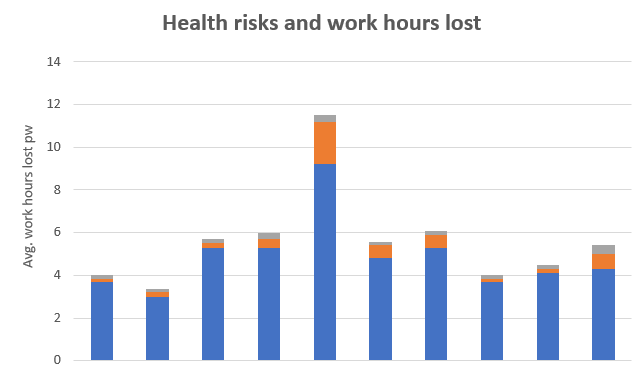Safe Work Workers’ Compensation latest statistics – Injury trends
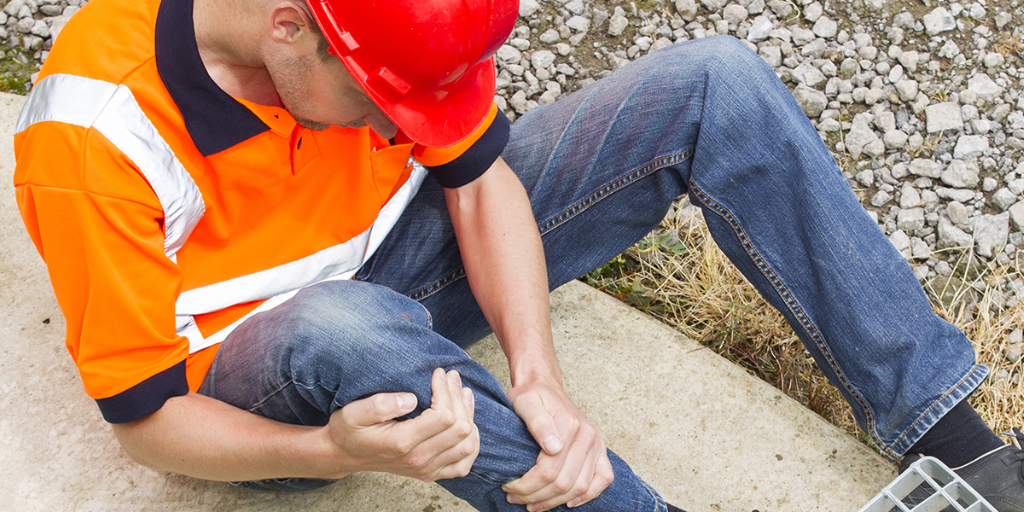
Safe Work Australia has recently published their latest report on Australian Workers’ Compensation statistics, for the 2015-16 period. The report provides us with an opportunity to investigate trends over the past 15 years in workplace injuries, and therefore assist businesses to develop and implement strategies to reduce workplace hazards and injury risk. The report refers only to ‘serious claims’, which are defined as accepted workers compensation claims that result in a total absence from work of one working week or more.
To save you from a statistical overdose, we’ve highlighted some of the key trends below, and provided some commentary to summarise the likely implications for your organisation. If you’ve only got 30 seconds to spare, the following graphic condenses a 58-page report into something you can read quickly – but we’d like you to take 3 minutes to read the summary that follows to develop a deeper understanding of the topic.

Firstly, the good news
Through engineering, design and training, the number of serious workplace claims has reduced by 17% over the last 15 years. In fact, only one ‘mechanism of injury’ has risen in frequency, with the number of employees proceeding to a serious claim after an assault more than doubling since 2000, reflecting the challenges that (primarily) emergency services and healthcare workers face when dealing with people with severe mental illness or those under the influence or alcohol or other drugs.
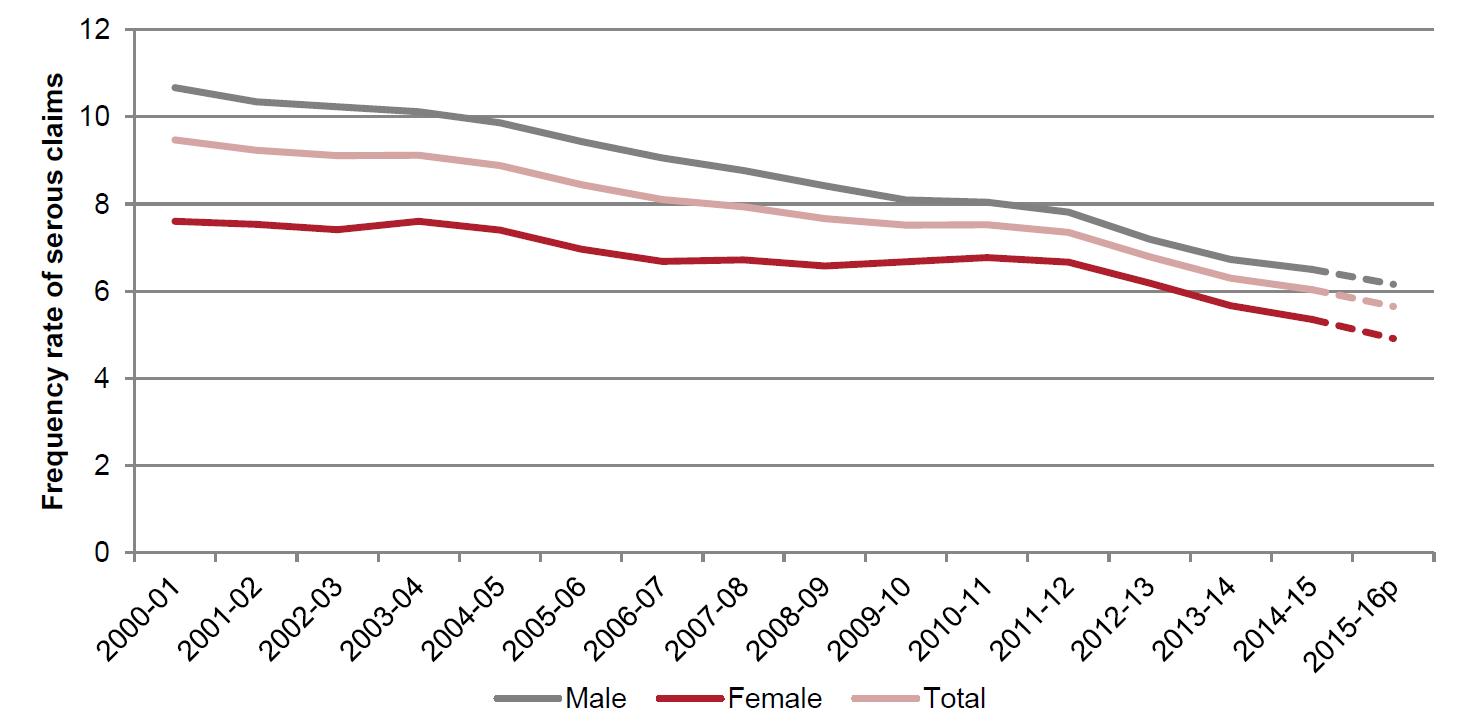
However, many issues remain unresolved and despite the drop, there were still 104,770 serious claims in 2015-16 that imposed significant physical, emotional and financial costs onto workers, their families, and their employers.
WHAT causes a serious injury claim?
Injury and musculoskeletal disorders (MSDs) accounted for 90% of serious claims in 2015-16, with soft tissue sprains and strains being by far the most common cause of MSD. ‘Diseases’ refer primarily to mental disorders (65%) with issues relating to exposure to disease-causing agents (such as dust, skin or digestive system irritants, and viruses and bacteria) accounting for a large part of the remainder.

HOW are people sustaining musculoskeletal injuries?
‘Body stressing’ is a term encompassing a wide variety of injury mechanisms, including (but not limited to) injury from operating equipment, material handling, patient and animal handling, and pain associated with static postures, for example using a computer. Other categories are self explanatory.

WHERE are people getting hurt?
In 2000, trunk and upper limb injuries were equally common, accounting for approx. 32% of all injuries. While the absolute number of injuries has since decreased for all body areas, the biggest reduction (36% over 15 years) has been in serious back claims, due to task redesign, equipment, targeted education and better treatment pathways. In contrast, upper limb injuries have only reduced by 10% over the same period and now account for nearly 2 in 5 serious claims.
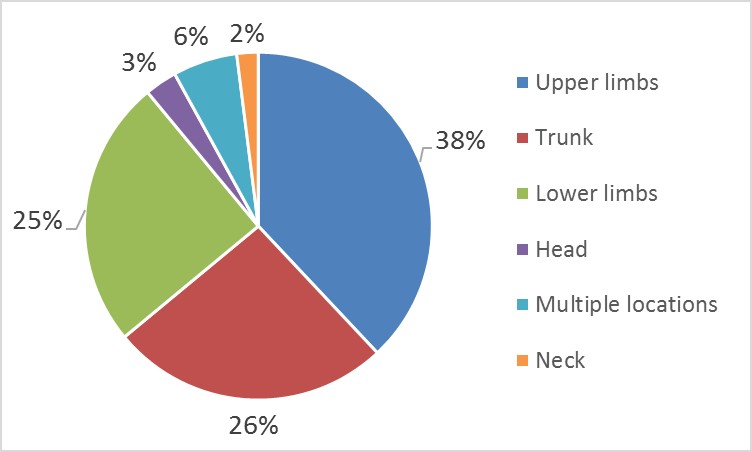
WHO is getting hurt?
Unsurprisingly, industries where workers are more likely to rely on their physical capacity to generate an income have greater serious injury frequency than professional or technical roles (see Figure 6). In most industry sectors, the frequency and cost of severe claims is significantly higher in older workers.
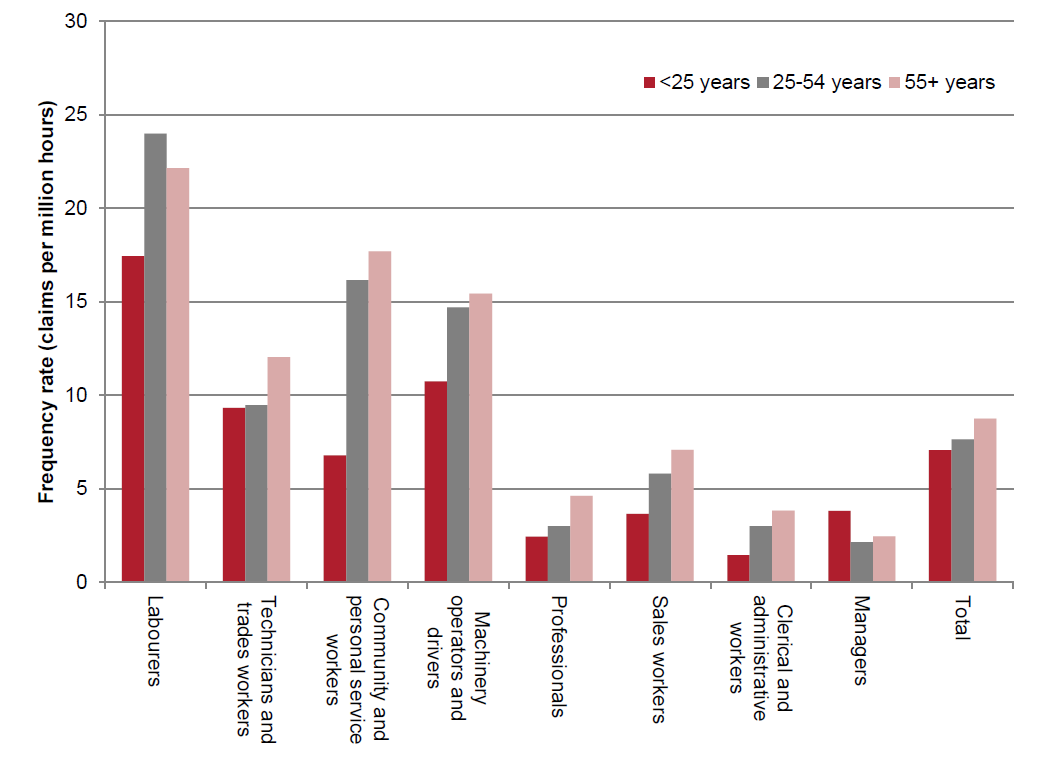
Injury Trends
- The incidence of serious injuries is heading slowly in the right direction – downwards. However, there remains a lot of work to do to achieve continued reductions in injury rates, and to mirror the ‘towards zero’ campaign for road safety, at an individual level, where one serious claim or serious injury is one too many.
- Musculoskeletal sprains and strains are still the most common cause of serious workplace injury, and they typically occur secondary to the worker performing a hazardous manual task.
- Older workers are more likely to suffer a serious injury. We also have an ageing workforce, increasing retirement/pension age, and a high and growing prevalence of the overweight, obese and physically inactive across all age groups and occupations. Each of these factors are independently associated with increased injury risk.
- Certain industry sectors and occupations remain over-represented, encompassing a significant proportion of current jobs, and in the case of health and aged care, new jobs.
What does it all mean?
There is overwhelming evidence that addressing hazardous manual tasks at their source by elimination, substitution, isolation or engineering controls are the best form of defence for risk mitigation. However, one cannot ignore the human factors that are also at play – the knowledge, skill, functional fitness, and even culture of the workforce can profoundly impact injury risk.
Tackling hazardous manual tasks on both fronts (i.e. at the task level and the human level) and considering both injury prevention and injury mitigation (how to intervene early, providing the right treatment, in the right place, at the right time, and thus reducing the proportion of claims that progress to ‘serious’ level) will lead to the best outcome. Ethos Health have a thorough risk + control model (Figure 7) we use to help organisations establish a long term strategic plan to develop lasting and meaningful improvements to your musculoskeletal disorder risk profile.
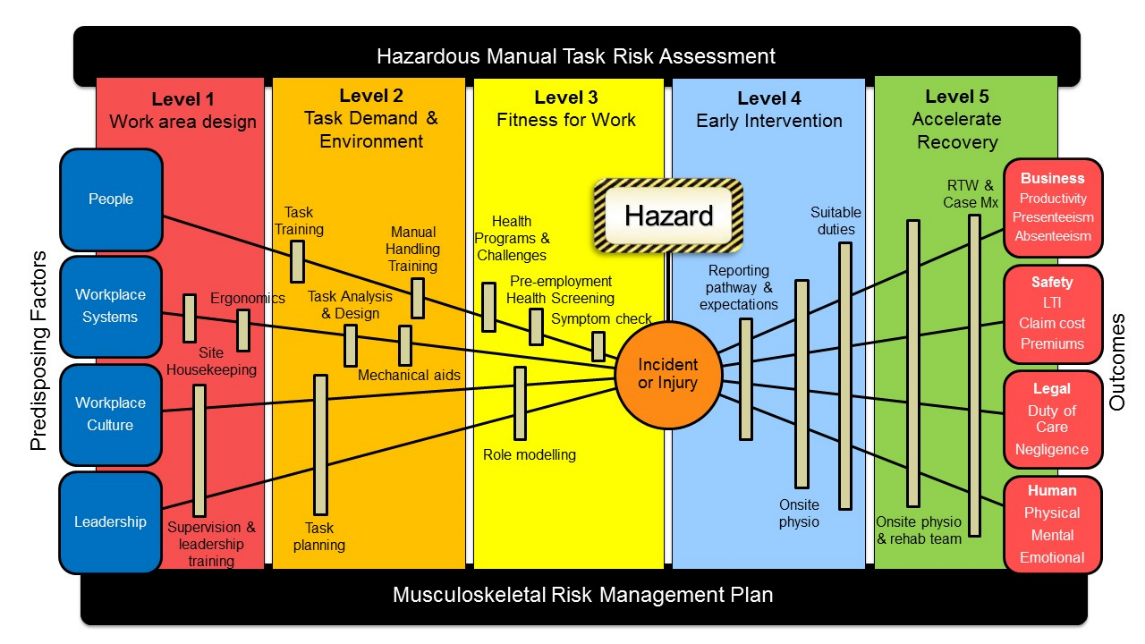
If you would like more information on the Safe Work report or our approach to musculoskeletal injury risk management, please feel free to contact us and speak to a consultant.


